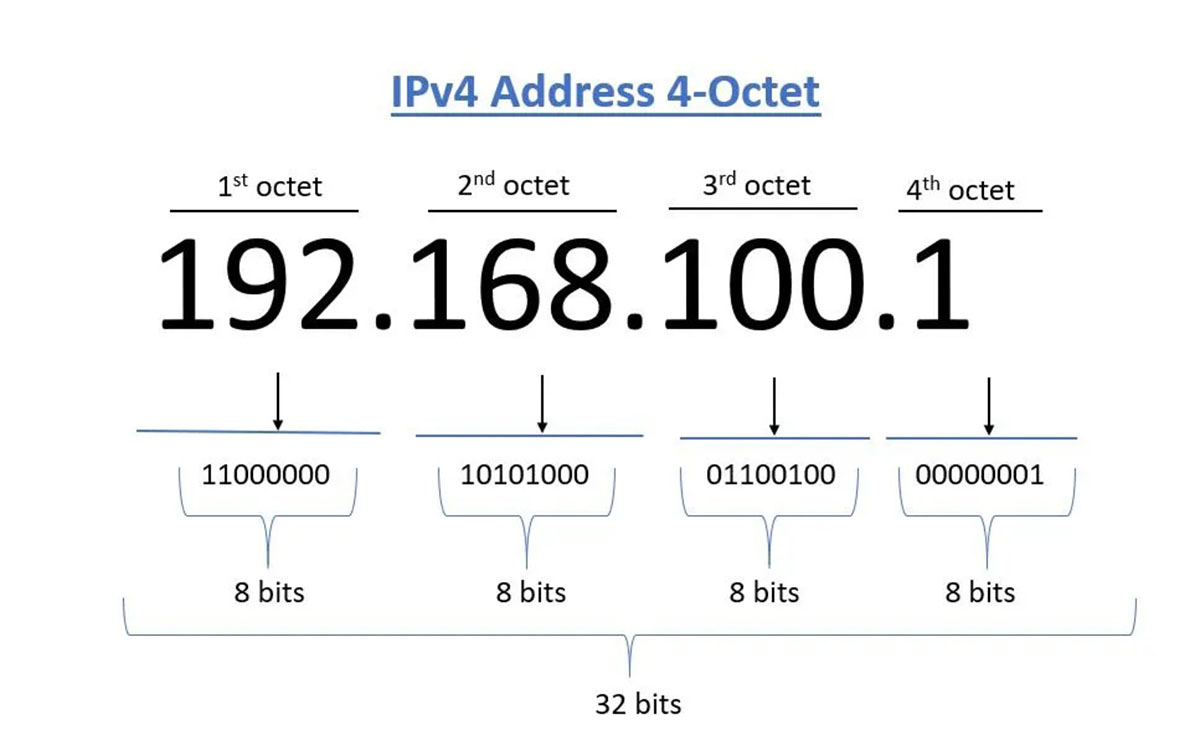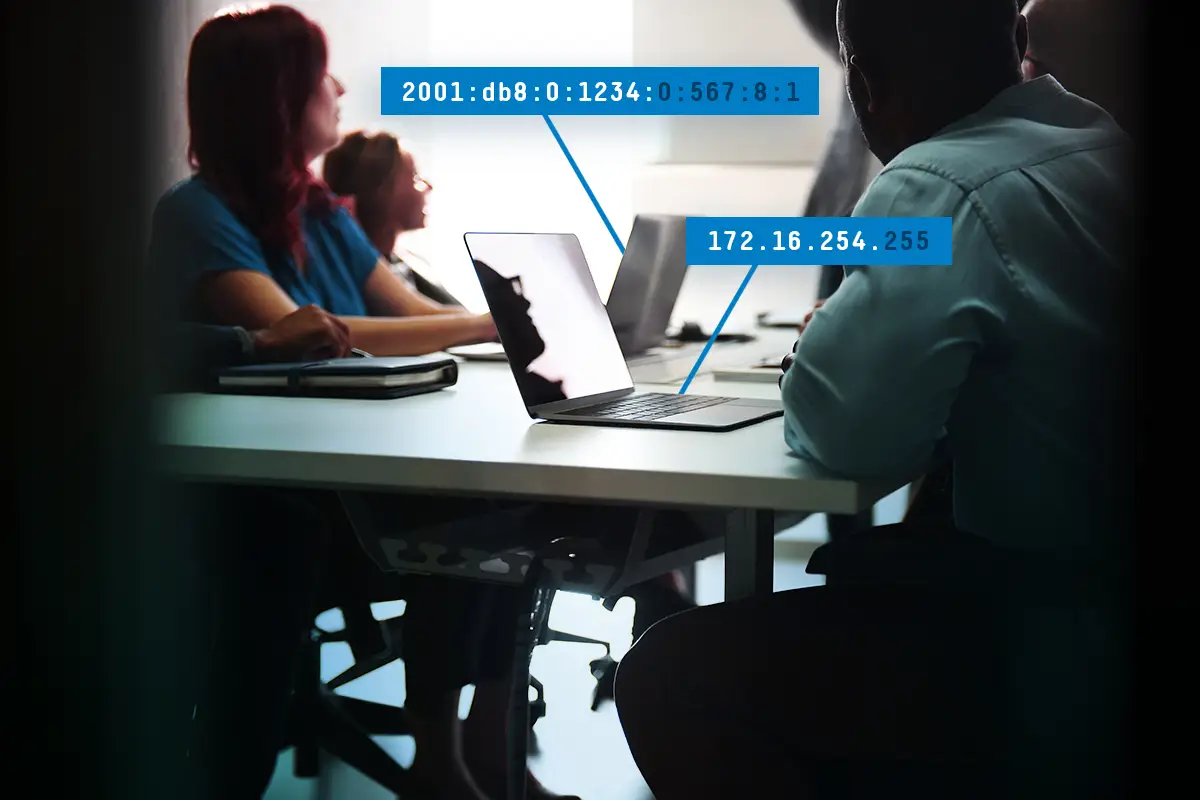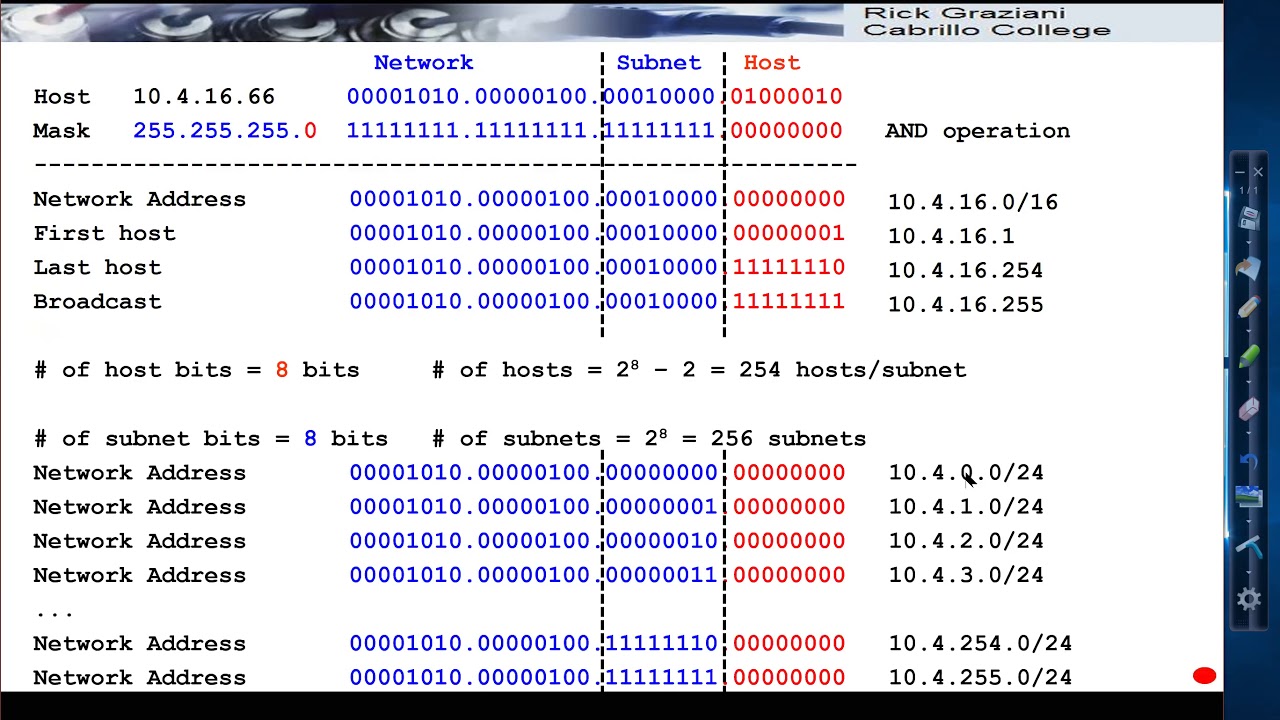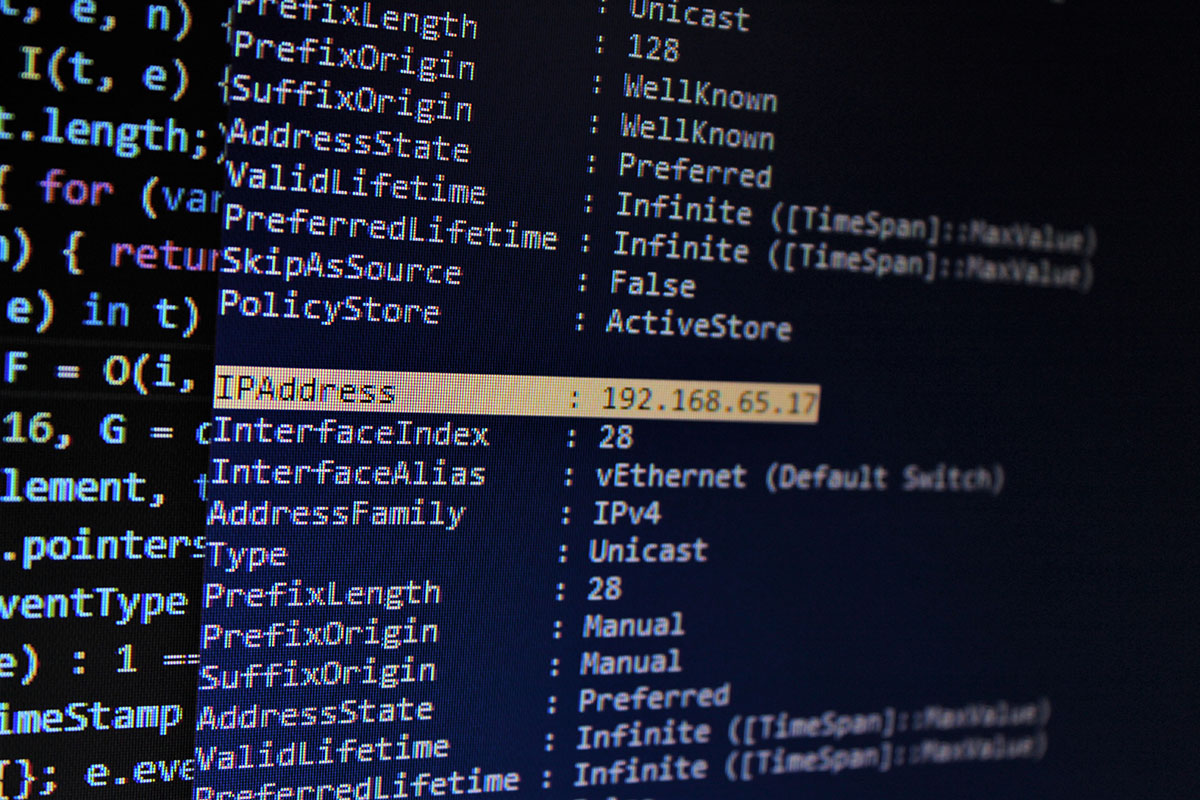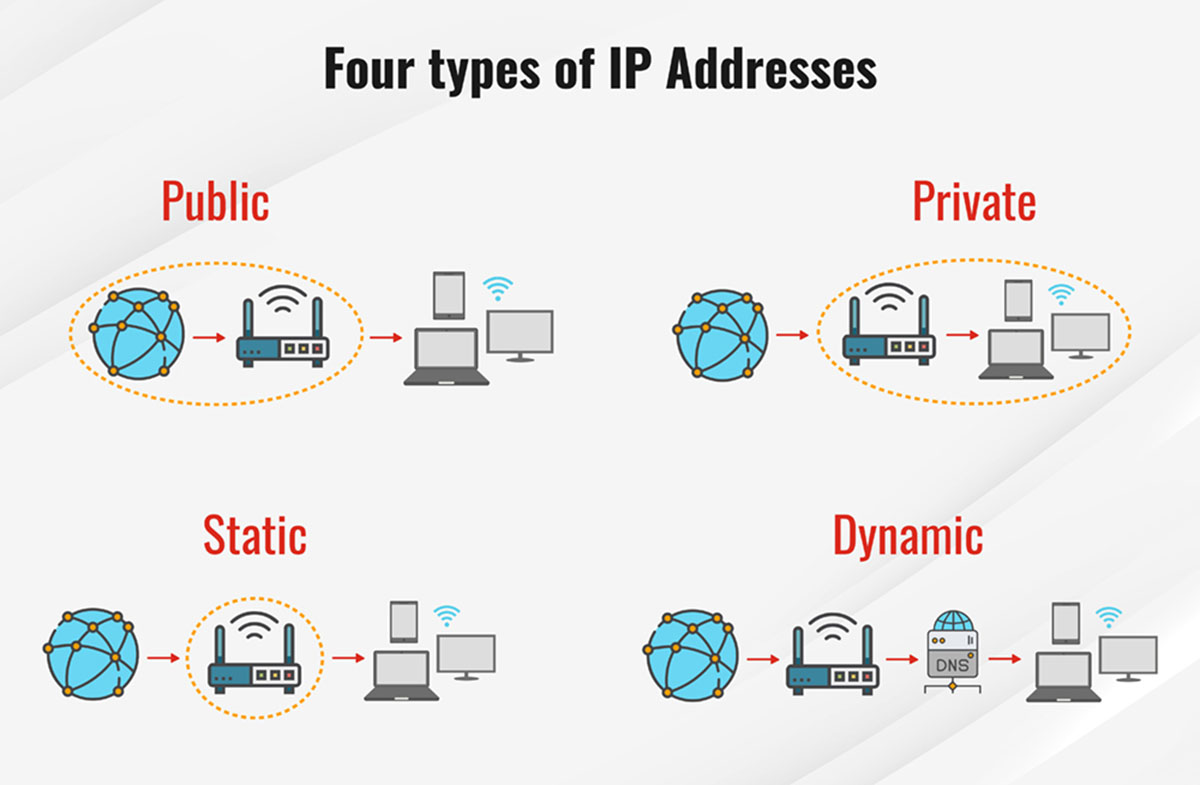Introduction
An IP address, or Internet Protocol address, is a numerical identifier assigned to each device connected to a computer network. It serves as a unique identifier, allowing devices to communicate with each other over the internet. Understanding the basics of an IP address is essential for anyone working in the field of networking or website development.
The need for IP addresses arose with the growth of the internet and the necessity for devices to have distinct identities. Without IP addresses, it would be impossible for data to be sent and received across networks. In simple terms, an IP address acts as a mailing address for digital information, ensuring that it reaches its intended destination.
In this article, we will explore the binary representation of IP addresses, delve into the structure of an IP address, and compare the differences between IPv4 and IPv6 addressing schemes. Additionally, we will address the burning question: how many bits are there in an IPv4 and IPv6 address?
By the end of this article, you will have a comprehensive understanding of IP addresses, their binary representation, and the number of bits utilized in both IPv4 and IPv6 address formats.
What is an IP Address?
An IP address is a unique numerical identifier that is assigned to every device connected to a computer network. It acts as an address for devices on the internet, allowing them to communicate with each other. Just as your home address tells the post office where to deliver your mail, an IP address serves as the location indicator for data packets traveling across the internet.
IP addresses are essential for devices to establish connections and exchange information. They enable data to be routed between networks, ensuring that it reaches its intended destination. Without IP addresses, devices would be unable to communicate with each other over the internet.
There are two main types of IP addresses: IPv4 and IPv6. IPv4 addresses are the most commonly used type and consist of a 32-bit binary value, typically represented in decimal form with four sets of numbers separated by periods (e.g., 192.168.0.1). IPv6 addresses, on the other hand, are newer and use a 128-bit binary value, represented in hexadecimal form with eight sets of numbers separated by colons (e.g., 2001:0db8:85a3:0000:0000:8a2e:0370:7334).
An IP address can be assigned dynamically or statically. Dynamic IP addresses are automatically assigned by a Dynamic Host Configuration Protocol (DHCP) server and can change over time. On the other hand, static IP addresses are manually configured and remain constant, allowing for consistent connections.
IP addresses play a crucial role in internet communication and are an integral part of networking protocols. They enable devices to connect, communicate, and exchange data across networks, serving as the backbone of the internet as we know it today.
Binary Representation of an IP Address
The binary representation of an IP address refers to the way in which IP addresses are expressed in binary form, consisting of 0s and 1s. This binary format is used because computers communicate and process data in binary code.
For IPv4 addresses, each segment of the address is represented by an 8-bit binary number, resulting in a total of 32 bits. This means that an IPv4 address consists of four sets of 8-bit numbers, separated by periods. For example, the IP address 192.168.0.1 is represented in binary as 11000000.10101000.00000000.00000001.
Similarly, the IPv6 address format uses a 128-bit binary representation. It employs hexadecimal notation, which uses a combination of 0-9 and A-F to represent values from 0 to 15. Each segment of an IPv6 address consists of 16 bits, resulting in eight groups of four hexadecimal numbers separated by colons. For example, the IPv6 address 2001:0db8:85a3:0000:0000:8a2e:0370:7334 is represented in binary as 0010000000000001:0000110110111000:1000010110100011:0000000000000000:0000000000000000:1000101000101110:0000001101110000:0111001100110100.
The binary representation of an IP address is crucial in networking and routing protocols, as it allows devices to properly interpret and forward data across networks. It provides a standardized format that ensures compatibility and consistency in data transmission.
By understanding the binary representation of IP addresses, network administrators and developers can effectively troubleshoot network issues, configure routers and switches, and implement security measures to protect against unauthorized access.
Overall, the binary representation of an IP address is a fundamental aspect of networking and serves as the foundation for communication and data exchange between devices on the internet.
The Structure of an IP Address
The structure of an IP address refers to the organization and format of its components. Both IPv4 and IPv6 addresses have distinct structures that provide important information about the network and the specific device.
For IPv4 addresses, the structure consists of four segments, each separated by a period. Each segment is represented by an 8-bit binary number, ranging from 0 to 255, or a decimal number in the same range. Each segment is known as an octet, as it represents 8 bits of the total 32 bits in an IPv4 address.
For example, in the IPv4 address 192.168.0.1, the structure is as follows:
- The first segment is 192
- The second segment is 168
- The third segment is 0
- The fourth segment is 1
Each segment of an IPv4 address represents a specific network or host identifier. The first segment, often referred to as the network address, identifies the network to which the device belongs. The other segments, known as the host address, identify the specific device within that network.
IPv6 addresses have a different structure. They consist of eight groups of four hexadecimal numbers separated by colons. Each group represents 16 bits, resulting in a total of 128 bits in an IPv6 address.
For example, in the IPv6 address 2001:0db8:85a3:0000:0000:8a2e:0370:7334, the structure is as follows:
- The first group is 2001
- The second group is 0db8
- The third group is 85a3
- The fourth group is 0000
- The fifth group is 0000
- The sixth group is 8a2e
- The seventh group is 0370
- The eighth group is 7334
IPv6 addresses provide a significantly larger address space compared to IPv4 addresses, allowing for the allocation of unique addresses to a much larger number of devices.
Understanding the structure of an IP address is essential for network administrators and developers. It enables them to properly configure and manage devices on a network, implement security measures, and ensure efficient data transmission.
The structure of an IP address provides valuable information and serves as the foundation for communication and network management in the digital world.
IPv4 vs IPv6
IPv4 and IPv6 are two versions of the Internet Protocol that are used to assign addresses to devices on a network. While IPv4 has been in use for several decades, IPv6 was developed to address the limitations of IPv4 and accommodate the growing number of devices connected to the internet.
IPv4, which stands for Internet Protocol version 4, is the most widely used IP protocol. It uses a 32-bit binary address, resulting in approximately 4.3 billion unique addresses. While this may have seemed like an ample supply at the time of its creation, the explosion of internet-connected devices has led to a shortage of available IPv4 addresses.
IPv6, on the other hand, stands for Internet Protocol version 6 and was developed as a long-term solution to the address exhaustion problem. IPv6 uses a 128-bit binary address, providing an enormous address space of approximately 340 undecillion (3.4 × 10^38) unique addresses.
In addition to the larger address space, IPv6 brings several improvements over IPv4. One major improvement is the simplified header format, which reduces the processing overhead on network devices. IPv6 also improves network efficiency and security features, such as built-in support for encryption and authentication.
While IPv6 offers numerous advantages, the widespread adoption has been relatively slow due to compatibility challenges with existing IPv4 infrastructure. However, efforts are ongoing to transition to IPv6, with many internet service providers, network operators, and technology companies actively supporting and implementing IPv6 protocols.
Ultimately, the transition to IPv6 is necessary to ensure the continued growth and functionality of the internet. The availability of a significantly larger number of IP addresses will accommodate the ever-increasing number of devices joining the network.
In summary, IPv4 and IPv6 are two versions of the Internet Protocol, with IPv4 being the current standard and IPv6 designed to overcome its limitations. IPv6 provides a much larger address space and offers various functional and security enhancements, making it the future of IP addressing.
How Many Bits in an IPv4 Address?
An IPv4 address is a 32-bit binary value that consists of four segments, each representing 8 bits. To answer the question of how many bits are in an IPv4 address, we can simply multiply the number of segments (4) by the number of bits per segment (8).
4 segments x 8 bits/segment = 32 bits
Therefore, an IPv4 address has a total of 32 bits.
This 32-bit address allows for approximately 4.3 billion unique addresses (2^32), which seemed like a vast number when the IPv4 protocol was introduced. However, with the proliferation of internet-connected devices, the demand for IP addresses has exceeded the available supply, leading to address exhaustion.
Efforts to conserve and optimize IPv4 address usage, such as the use of Network Address Translation (NAT), have provided temporary solutions. However, the transition to IPv6 is necessary to overcome the limitations of IPv4 and accommodate the future growth of the internet.
In summary, an IPv4 address is a 32-bit binary value, composed of four segments of 8 bits each. This provides a total of 32 bits for addressing, allowing for approximately 4.3 billion unique IPv4 addresses. While IPv4 has served as the backbone of the internet for many years, the transition to IPv6 is essential for the continued growth and connectivity of devices in the digital age.
How Many Bits in an IPv6 Address?
An IPv6 address is a 128-bit binary value that consists of eight segments, each represented by 16 bits. To determine the number of bits in an IPv6 address, we can multiply the number of segments (8) by the number of bits per segment (16).
8 segments x 16 bits/segment = 128 bits
Therefore, an IPv6 address contains a total of 128 bits.
Compared to the 32-bit IPv4 address, IPv6 provides a significantly larger address space. The tremendous increase in the number of available bits in an IPv6 address allows for approximately 340 undecillion (3.4 × 10^38) unique addresses.
With this vast address space, IPv6 can accommodate the ever-growing number of devices that are joining the internet, including smartphones, tablets, IoT devices, and more. It eliminates the concern of IP address exhaustion that is prevalent in IPv4.
Each segment of an IPv6 address is represented in hexadecimal format, using four hexadecimal digits. The segments are separated by colons, resulting in a more compact and readable address representation compared to the dot-decimal notation of IPv4.
While the transition from IPv4 to IPv6 has been gradual and presents challenges due to compatibility issues, industry efforts are pushing for wider adoption and support for IPv6. Many internet service providers, network operators, and technology companies are actively working on implementing IPv6 protocols to ensure the scalability and future of the internet.
In summary, an IPv6 address is composed of 128 bits, divided into eight segments of 16 bits each. This expanded address space of IPv6 allows for an astonishing number of unique addresses compared to IPv4, making it the ideal addressing solution for the growing number of internet-connected devices.
Conclusion
Understanding the basic concepts surrounding IP addresses is crucial in the world of networking and website development. IP addresses serve as unique identifiers for devices, enabling them to communicate and exchange data over the internet.
In this article, we explored various aspects of IP addresses, starting with their definition and purpose. We learned that an IP address acts as a digital address for devices on a network, allowing data to be routed and delivered to the correct destination.
We discussed the binary representation of IP addresses, with IPv4 addresses being expressed in 32 bits and IPv6 addresses utilizing 128 bits. The binary representation ensures compatibility and consistency in data transmission, allowing devices to interpret and process IP addresses accurately.
We also examined the structure of IP addresses, understanding the format of IPv4 addresses with their four segments, and the organization of IPv6 addresses with eight segments. We grasped the significance of network and host identifiers within IP addresses and their role in facilitating communication.
Furthermore, we explored the differences between IPv4 and IPv6, with IPv6 being developed as a solution to the address shortage problem faced by IPv4 due to the exponential growth of internet-connected devices. We discovered that IPv6 offers a significantly larger address space, improved efficiency, and enhanced security features compared to IPv4.
In conclusion, IP addresses are the backbone of internet connectivity, allowing devices to establish connections and communicate with each other. Understanding the binary representation, structure, and differences between IPv4 and IPv6 addresses is essential for network administrators, developers, and anyone involved in the world of networking.
As technology continues to evolve, the transition to IPv6 becomes imperative to meet the demands of an increasingly connected world. Embracing IPv6 will pave the way for limitless growth, ensuring that every device can be assigned a unique IP address and participate seamlessly in the global network.







